The W76 is an American thermonuclear warhead.
W76 may also refer to:
- Kabutonuma Station, in Hokkaido, Japan
- Rhombidodecadodecahedron, polyhedron with 54 faces
The W76 is an American thermonuclear warhead.
W76 may also refer to:
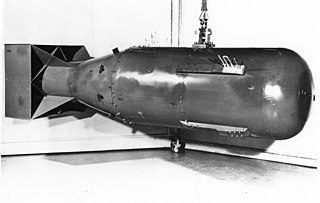
In nuclear strategy, a first strike or preemptive strike is a preemptive surprise attack employing overwhelming force. First strike capability is a country's ability to defeat another nuclear power by destroying its arsenal to the point where the attacking country can survive the weakened retaliation while the opposing side is left unable to continue war. The preferred methodology is to attack the opponent's strategic nuclear weapon facilities, command and control sites, and storage depots first. The strategy is called counterforce.

Operation Crosstie was a series of 48 nuclear tests conducted by the United States in 1967–1968 at the Nevada Test Site. These tests followed the Operation Latchkey series and preceded the Operation Bowline series.
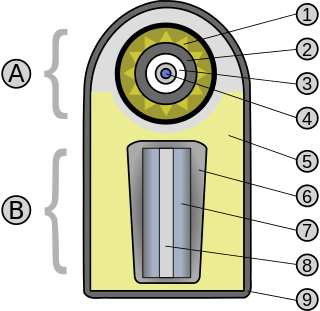
A thermonuclear weapon, fusion weapon or hydrogen bomb (H bomb) is a second-generation nuclear weapon design. Its greater sophistication affords it vastly greater destructive power than first-generation nuclear bombs, a more compact size, a lower mass, or a combination of these benefits. Characteristics of nuclear fusion reactions make possible the use of non-fissile depleted uranium as the weapon's main fuel, thus allowing more efficient use of scarce fissile material such as uranium-235 or plutonium-239. The first full-scale thermonuclear test was carried out by the United States in 1952; the concept has since been employed by most of the world's nuclear powers in the design of their weapons.

The W88 is an American thermonuclear warhead, with an estimated yield of 475 kilotonnes of TNT (1,990 TJ), and is small enough to fit on MIRVed missiles. The W88 was designed at the Los Alamos National Laboratory in the 1970s. In 1999, the director of Los Alamos who had presided over its design described it as "the most advanced U.S. nuclear warhead". As of 2021, the latest version is called the W88 ALT 370, the first unit of which came into production on 1 July, 2021, after 11 years of development. The Trident II submarine-launched ballistic missile (SLBM) can be armed with up to eight W88 warheads or twelve 100 kt W76 warheads, but it is limited to eight warheads under the Strategic Offensive Reductions Treaty.

The W76 is an American thermonuclear warhead, designed for use on the UGM-96 Trident I submarine-launched ballistic missiles (SLBMs) and subsequently moved to the UGM-133 Trident II as Trident I was phased out of service. The first variant, the W76 mod 0 (W76-0) was manufactured from 1978 to 1987, and was gradually replaced by the W76 mod 1 (W76-1) between 2008 and 2018, completely replacing the Mod 0 in the active stockpile. In 2018 it was announced that some Mod 1 warheads would be converted to a new low-yield W76 mod 2 (W76-2) version. The first Mod 2 warheads were deployed in late 2019.
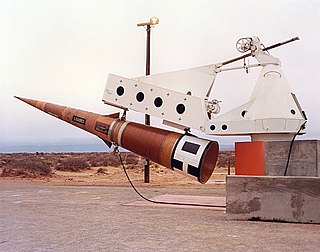
The Sprint was a two-stage, solid-fuel anti-ballistic missile (ABM), armed with a W66 enhanced-radiation thermonuclear warhead used by the United States Army during 1975–76. It was designed to intercept incoming reentry vehicles (RV) after they had descended below an altitude of about 60 kilometres (37 mi), where the thickening air stripped away any decoys or radar reflectors and exposed the RV to observation by radar. As the RV would be traveling at about 5 miles per second, Sprint needed to have phenomenal performance to achieve an interception in the few seconds before the RV reached its target.
The W66 thermonuclear warhead was used on the Sprint anti-ballistic missile system, designed to be a short-range interceptor to shoot down incoming ICBM warheads.
The W67 was an American thermonuclear warhead developed from June 1966 but then cancelled prior to any production or service use approximately 18 months later.
Be bold may refer to:

Rhett James McLaughlin and Charles Lincoln "Link" Neal III are an American comedy duo. Self-styled as "Internetainers", they are known for creating and hosting the YouTube series Good Mythical Morning. Their other notable projects include comedic songs and sketches, their IFC series Rhett & Link: Commercial Kings, their YouTube Premium series Rhett & Link's Buddy System, their podcast Ear Biscuits and their novel The Lost Causes of Bleak Creek.
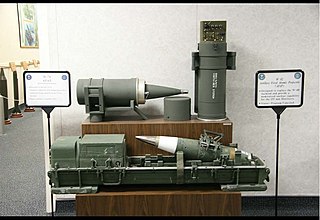
The W74 warhead, also known as XM517, was an American nuclear artillery shell that was cancelled before production.
Neutral point of view may refer to:
Fogbank is a code name given to a secret material used in the W76, W78 and W88 nuclear warheads that are part of the United States nuclear arsenal. The process to create Fogbank was lost by 2000, when it was needed for the refurbishment of old warheads. Fogbank was then reverse engineered by the National Nuclear Security Administration (NNSA) over five years and at the cost of tens of millions of dollars.

Kabutonuma Station is a railway station in Toyotomi, Teshio District, Hokkaidō, Japan. Only local trains serve this station.

Clacton Pier is a pier located in the seaside resort town of Clacton-on-Sea in England. It was named Pier of the Year in 2020 by the National Piers Society. The pier hosts rides, ten-pin bowling, arcades, a seaquarium, golf and a soft-play centre – as well as numerous food, drink and retail outlets.
Red link may refer to:
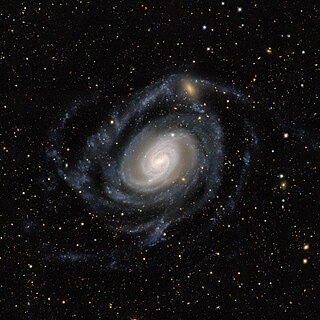
NGC 289 is a spiral galaxy in the southern constellation of Sculptor, located at a distance of 76 megalight-years from the Milky Way. It was discovered on September 27, 1834, by John Herschel. The compiler of the New General Catalogue, John Louis Emil Dreyer, noted that NGC 289 was "pretty bright, large, extended, between 2 considerably bright stars". The plane of the galaxy is inclined by an angle of 45° to the line of sight from the Earth.
The Cape Government Railways 4th Class 4-6-0TT of 1882 with Joy valve gear, was a South African steam locomotive from the pre-Union era in the Cape of Good Hope.
The W93 is an American nuclear warhead planned to replace the W76 and W88 warheads on United States Navy submarines from 2034. The warhead will be carried on the new Columbia-class submarines and will use a new aeroshell, the Mark 7 reentry body (RB). The warhead will be designed by Los Alamos National Laboratory.

Google Family Link is a family parental controls service by Google that allows parents to adjust parameters for their children's devices. The application allows parents to restrict content, approve or disapprove apps, set screen times, and more. Google Family Link requires Google accounts in order to access the app remotely.